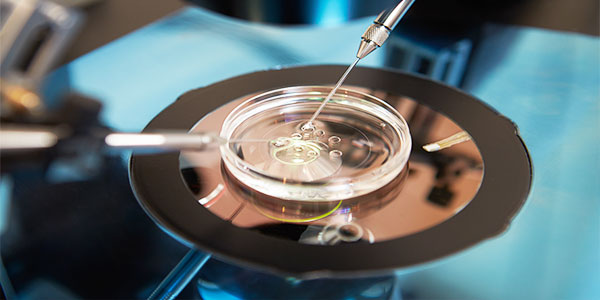Assisted Reproductive Technology (ART) refers to a range of medical procedures used to address infertility. It primarily involves procedures that manipulate eggs, sperm, or embryos to aid in conception. ART has significantly advanced over the years, providing hope to many couples and individuals who struggle with infertility.
A Study on Assisted Reproductive Technology
One of the most common forms of ART is in vitro fertilization (IVF), where eggs are retrieved from a woman’s ovaries and fertilized with sperm in a laboratory setting. The fertilized egg, now an embryo, is then implanted into the woman’s uterus, with the hope of achieving pregnancy. IVF has evolved to include techniques such as Intracytoplasmic Sperm Injection (ICSI), where a single sperm is injected directly into an egg, increasing the chances of fertilization, especially in cases of male infertility.
Another notable Assisted Reproductive Technology procedure is gamete intrafallopian transfer (GIFT), which involves placing both eggs and sperm directly into a woman’s fallopian tubes for natural fertilization. Although less common today, it remains an option for some patients. A similar procedure, zygote intrafallopian transfer (ZIFT), fertilizes eggs in the lab before transferring them to the fallopian tubes. Both GIFT and ZIFT are typically less popular than IVF due to the more invasive nature of the procedures and advancements in IVF technology.
Surrogacy is also part of ART. In surrogacy, another woman carries and delivers a baby for someone else, either through traditional surrogacy (where the surrogate’s egg is used) or gestational surrogacy (where the intended parents’ egg and sperm are used, or donor egg and sperm). This option is especially helpful for women who cannot carry a pregnancy due to medical conditions.
Egg and sperm donation offer additional pathways for individuals facing infertility. For women who cannot produce viable eggs, donated eggs can be fertilized using the partner’s sperm or donor sperm, and the resulting embryo can be implanted into the woman’s uterus or a surrogate’s. Similarly, sperm donation allows single women, lesbian couples, or women with male partners facing severe infertility to conceive using donor sperm.
Preimplantation genetic testing (PGT) is another advanced ART technique that allows doctors to screen embryos for genetic conditions before implantation. This ensures that only healthy embryos are implanted, reducing the risk of genetic diseases and increasing the chances of a successful pregnancy. This technology is particularly useful for individuals with a family history of genetic disorders or older women, as advanced maternal age can increase the likelihood of chromosomal abnormalities in embryos.
ART also encompasses fertility preservation methods like egg, sperm, and embryo freezing, which allow individuals to store their reproductive materials for future use. This is especially important for people undergoing treatments like chemotherapy, which can harm fertility, or for those who wish to delay having children until later in life. Egg freezing, in particular, has become increasingly popular among women who want to preserve their fertility as they age.
Despite its successes, ART presents emotional, physical, and financial challenges. The procedures can be physically demanding, requiring multiple hormone injections, blood tests, and ultrasounds. The emotional toll of infertility and repeated failed attempts at ART can also be significant. Additionally, ART treatments are often expensive, and while some insurance plans cover portions of the costs, many couples find themselves paying out-of-pocket for these procedures. The success rates of ART vary based on factors like age, health, and specific infertility issues, which means that multiple cycles may be needed, further driving up the cost and emotional investment.
Ethical considerations also arise with ART. The use of donor eggs, sperm, and embryos can create complex legal and ethical issues regarding parenthood. Surrogacy, in particular, can be controversial, with debates around the rights of the surrogate mother and the intended parents. Additionally, the ability to select embryos based on genetic traits through PGT has sparked debates about the potential for “designer babies” and the ethical implications of genetic selection.
In conclusion, assisted reproductive technology has revolutionized the field of infertility treatment, offering hope and solutions for many individuals and couples facing reproductive challenges. While it offers a variety of options tailored to different medical needs, ART is not without its physical, emotional, and ethical complexities. With continued advancements in technology, the field of ART is likely to evolve even further, making fertility treatment more accessible and effective for those in need.
